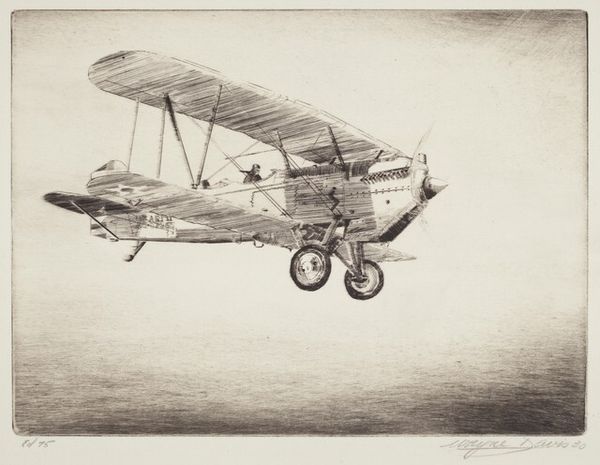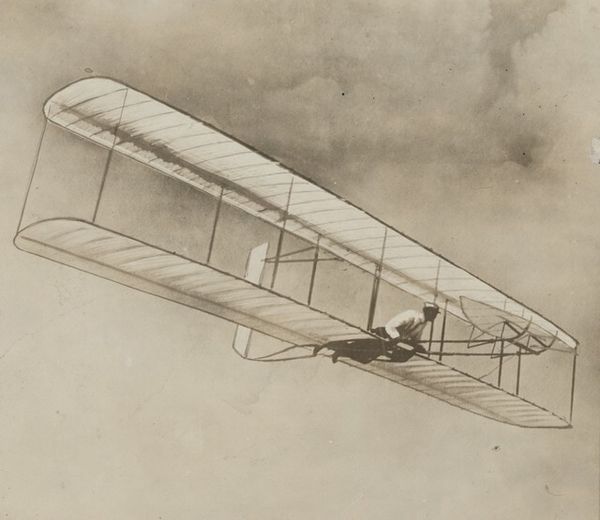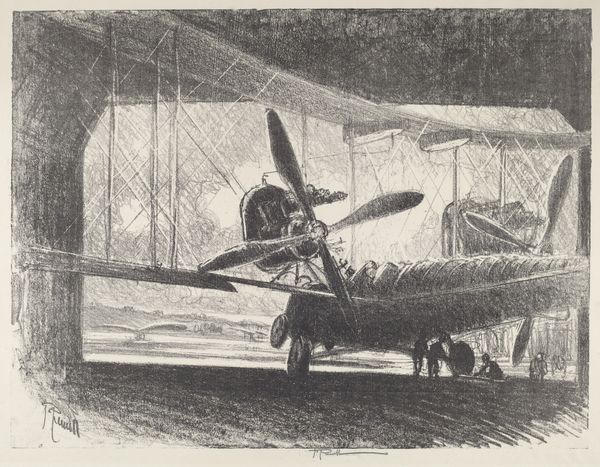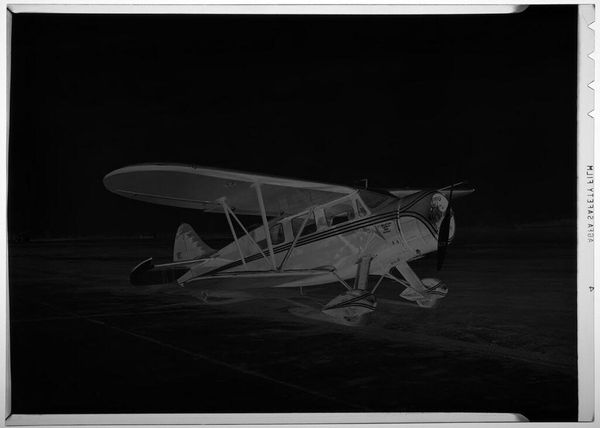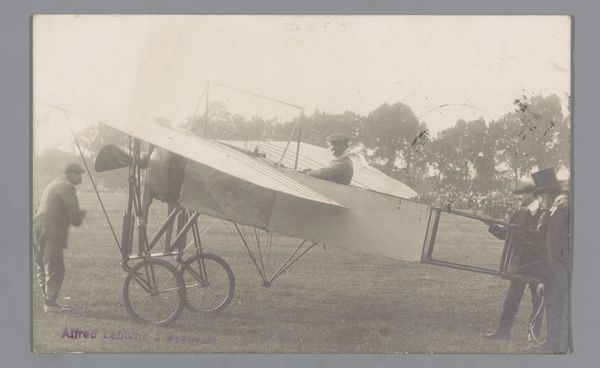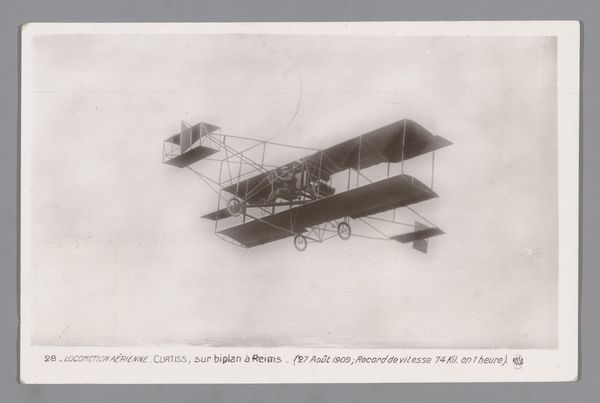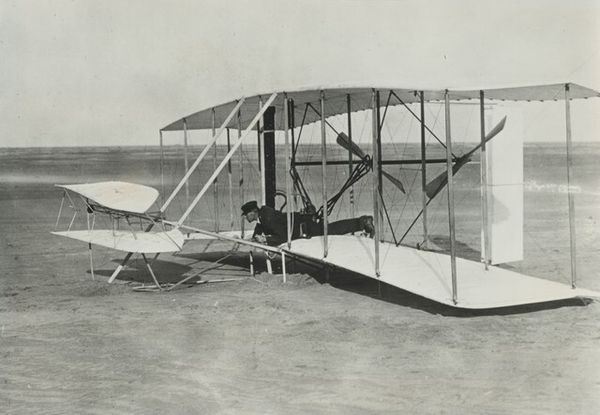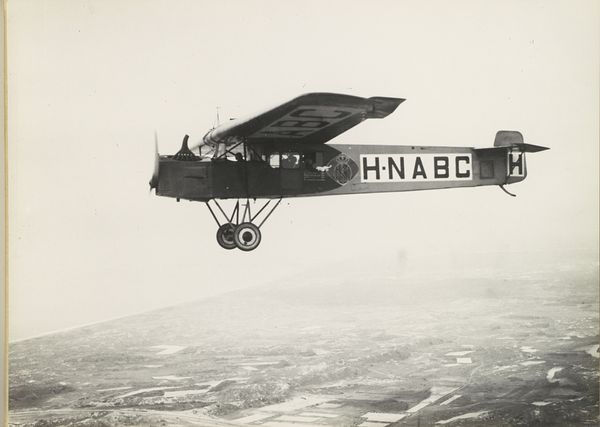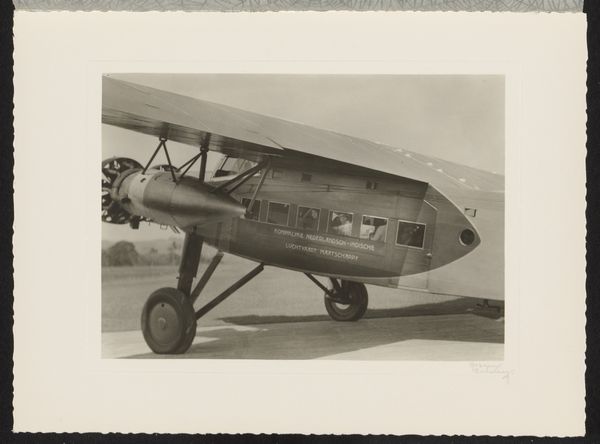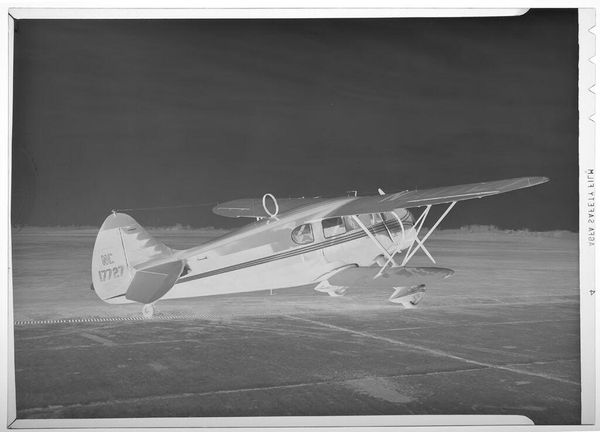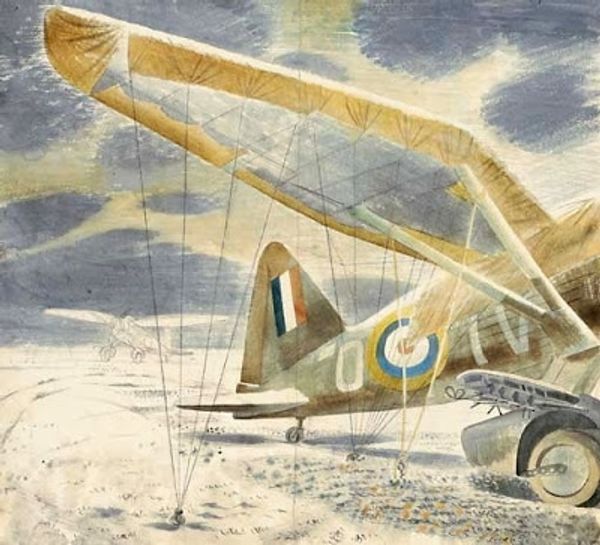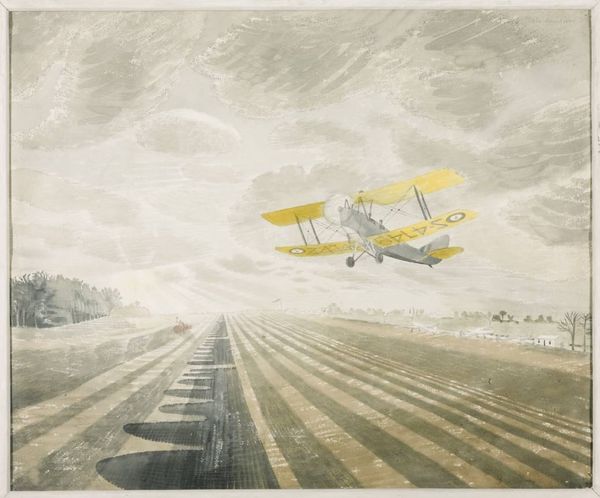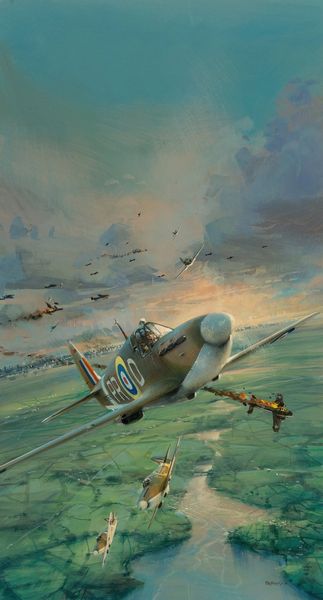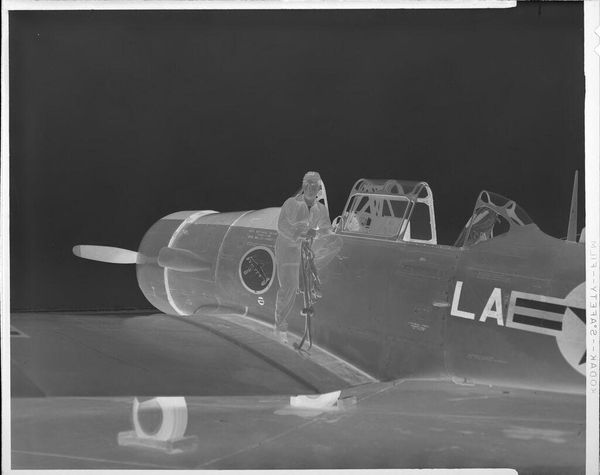
print, metal, photography, wood
# print
#
metal
#
landscape
#
photography
#
wood
#
modernism
#
realism
Dimensions: span 762 cm, length 561 cm, height 206 cm, weight 378 kg
Copyright: Rijks Museum: Open Domain
This is the FK 23 Bantam designed by Frits Koolhoven; a striking example of early aviation engineering. The aircraft commands attention with its biplane structure, a composition of horizontal wings intersecting vertical struts and wires, the embodiment of functional elegance. The color palette is restrained: the black and white fuselage contrasts with the wooden propeller, which adds a natural, almost organic element to the machine. The wings, inscribed with bold lettering, disrupt the symmetry, hinting at the dynamic forces of flight and perhaps the chaos of wartime. This interplay of form and function invites us to consider the structuralist underpinnings of design, where each element serves a purpose within a larger system. Here, the design itself signifies a moment of technological advancement. It reflects early aviation, where the boundary between art and engineering was blurred. Consider how the contrasting textures—smooth metal against coarse fabric—further animate the surface. The plane is a study in contrasts, where form communicates intent and the machine anticipates the sky.
Comments
rijksmuseum over 2 years ago
⋮
This aircraft was designed as a fighter plane in World War I by the Dutchman Koolhoven, chief designer for an English aircraft factory. The construction and materials were selected for their lightness. The 170 h.p. radial engine could reach a previously unknown speed of 220 kilometres per hour. The Bantam was a big hit at the ELTA (First Aviation Exhibition in Amsterdam) in 1919.
Join the conversation
Join millions of artists and users on Artera today and experience the ultimate creative platform.
